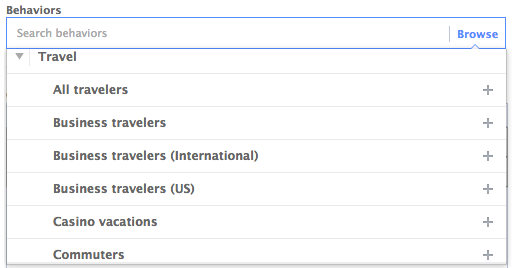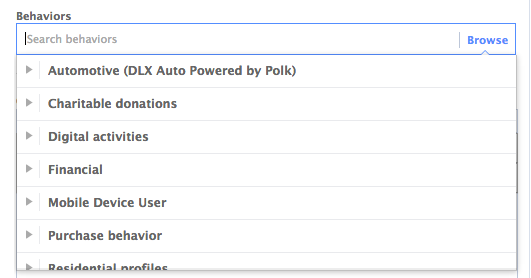05/20/2014
Social Media: Facebook's Newly Launched Behavioral Ad Targeting Includes Travel Behavior
By: Jeremy Myers
In a recent article, AdAge reported details of Facebook's new beta advertising tool, Behavorial Ad Target, that displays relevant ads based on a users’ real-time status updates. As part of the beta-test, ads are being tested on 1% of Facebook users – approximately 6 million people. Realizing users are more likely to interact with advertising targeted to their behaviors, the goal of the new program is to display more relevant ads to increase click rates.
Higher click-through rates translate to a higher conversion rate. Facebook's current offering, "Sponsored Stories", is considered by many to perform below industry averages in interaction. As the world's largest social media platform, Facebook is positioned to be the largest online advertising platform.
Before we discuss what Facebook’s real-time ad targeting could mean to the tourism industry, let's discuss why behavioral ad targeting is important.
What Is Behavioral Targeting?
Behavioral targeting is a technique used by online publishers and advertisers to increase the effectiveness of online ad campaigns. Online advertising platforms collect user information via their web-browsing habits and cookies. The early adopters of online behavioral targets are primarily retailers. Online retailers use behavioral targeting as a technique for increasing the relevance of product offers and promotions on a visitor by visitor basis.
Real-Time Behavioral Advertising A Gold Mine For Retailers And Brands
According to Deloitte and Harrison, 66% of U.S. internet users said that they would click on additional internet ads if they were more targeted. This means that the more targeted online ads, the higher the likelihood that consumers will click on them to make a purchase or become involved, i.e.”engaged,” with a brand or retailer.
How Retailers Could Use Behavioral Ad Targeting
Facebook real-time ads are delivered by speeding up Facebook’s current advertising applications and incorporating users’ conversations, actual users’ activity that includes status updates and wall posts, in its current ad algorithms.
The new targeting parameters, coupled with the current ways to target users by age, gender and interests offer exciting possibilities for destinations to increase the ROI of their digital ad spends. So how will the Ohio tourism industry be able to capital on this platform?
The possibilities are endless, really, but include:
-
The ability to deliver targeted ads about local restaurants, retailers, destinations and events to someone currently visiting your city.
-
Delivering information about upcoming events and festivals to a person Facebook knows will be planning a trip to your area.
-
Delivering competitive ads to users who have posted that they are in the market for a vacation or getaway.
The Basics: How to Target By Behavior
Whether you create your ads in Power Editor or the ad create tool, advertisers will see the “Behaviors” drop-down in audience targeting.
The behavior categories that can be targeted are:
-
Automotive
-
Charitable Donations
-
Digital Activities
-
Financial
-
Mobile Device User
-
Purchase Behavior
-
Residential Profiles
-
Travel
Let's look more closely at the Travel category, though I suggest looking closely at all of the categories, particularly digital activities and purchase behavior.

-
All Travelers
-
Business Travelers
-
Business Travelers (International)
-
Business Travelers (US)
-
Casino Vacations
-
Commuters
-
Cruises
-
Currently Traveling
-
Family Vacations
-
Frequent Flyers
-
Leisure Travelers
-
Personal Travelers (International)
-
Personal Travelers (US)
-
Planning to Travel (Returned from trip recently, use timeshares, used travel app recently)

